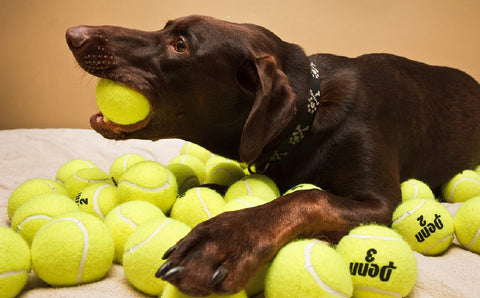Hello dear friends and welcome to another lesson from your friends at BDB! Today we want to talk about the difference between directing our dogs and interrupting our dogs.
Our role as a calm, capable leader for our dogs means we have to do two basic things: direct and interrupt. Directing means guiding the dog to do something we want them to do. The key to successful direction is – we have to have a common language and we must TEACH our dog what we want first. Which sometimes means hundreds of repetitions. Until they KNOW what we want, we should not be frustrated or angry if/when they don’t follow our direction.
Interrupting means we re-focus a distracted brain on what we want the brain focused on (spoiler alert – that’s usually US). Interruptions are needed to stop the escalation process of the brain and to re-focus it on the task at hand.
Put simply: we direct or allow the DO’s and interrupt the DONT’S. As a general rule of thumb, we want to be directing far more than we are interrupting. In fact, we want to use direction 90+% of the time and interruption 10% (or less) of the time. However, as with children, that 10% is imperative and must be impactful.
If we are constantly interrupting our dog’s behavior – if we’re saying “no, uh-uh, stop, or hey!” more than we’re directing/guiding and saying “Good, girl/boy”, then we haven’t done our job TEACHING and we’re certainly not doing our job guiding our dog through their day.
What’s easier? Only saying “No!” to your toddler when they do something wrong and expecting them to figure out what you want by process of elimination? Or simply guiding them into doing something you want, and they enjoy?
If we spend most of our time teaching and directing our dogs, showing them what we DO want them to do, they will look to us for guidance instinctually and be fulfilled mentally. Dogs want to work; they want direction, and they want to please us. By always directing our dogs, and only interrupting when truly necessary we can create a calm mind that is in a follower state – meaning they are looking to us for direction. And it also means they’re not going to chew a hole through our coach or go potty on our new rug.
But here’s the best part – every time we give our dog direction, and they complete the task, it gives us a chance TO GIVE AFFECTION for a job well done!
When the 90% direction vs 10% interruption gets way out of balance (meaning we’re “interrupting” or worse – punishing – more than directing, it’s typically because we are not supervising our dog and they get bored or simply distracted. While what they are doing (digging, barking, chewing, eating food off the counter, etc) isn’t actually “bad” in the dog world, we simply don’t like it. But it’s actually our fault for not guiding them into an activity we DO like and then supervising/following-through that they do it.
Our dogs need supervision. When we can’t supervise them, we need to make sure they’re safe in their crate. If we aren’t supervising our dog, we not only miss out on opportunities to direct them, but we allow them to make decisions on their own that could end in our frustration – which can damage the relationship if we react out of frustration/anger. Or worse – oftentimes our lack of supervision leads to behaviors that are incredibly harmful for our dogs (and expensive for us to fix). Keep supervision in mind so you can have plenty of opportunities to direct and praise, rather than interrupt and/or punish.
Should we need to interrupt, a few methods will be very useful. Remember, dogs use energy, body language/eye contact, touch, space, and sound to communicate. So, we can utilize one or several of those options to interrupt and refocus the brain.
Let’s say you have a “no furniture unless invited” rule and your dog jumps on the couch uninvited because he/she gets overly excited about a new guest. We can “mark” that we disagree with the brain escalating and the body jumping on the couch with a sound – “Uh-uh!” Then we can simply guide the dog off the couch via the collar or a leash. We now need to follow-through using the collar or leash to slow the body and brain down, refocusing it on us. Then, we direct our dog to something they CAN do (lay on their bed), and follow-through until we get a calm, follower state of mind.
Recap:
- Interrupt/Disagree
- Calm the Brain
- Guide to Something We Want
Some keys to a proper interruption:
- Your energy must be calm and certain
- Your timing should be as early in the brain’s escalation process as possible
- Your intensity should match or be slightly higher than the dog’s intensity (think about kids – they know if you mean it or not)
You don’t want to fly off the handle when interrupting your dog, or believe us, you WILL make the problem much worse, and over time your dog will learn that you are not a calm, capable leader. So, make sure your energy, timing, and intensity all say what you really want them to.
Finally, if you don’t feel you can create calm via direction and/or interruption and follow-through, you can always wait for it. We call this Create or Wait. Better to wait it out than to unwittingly reinforce bad behaviors. Patience is the best tool in a dog trainers toolbox.
But remember: never move forward or reward anything until you have a calm, follower state. Afterall, you are responsible for creating your dog’s calm, follower state.











